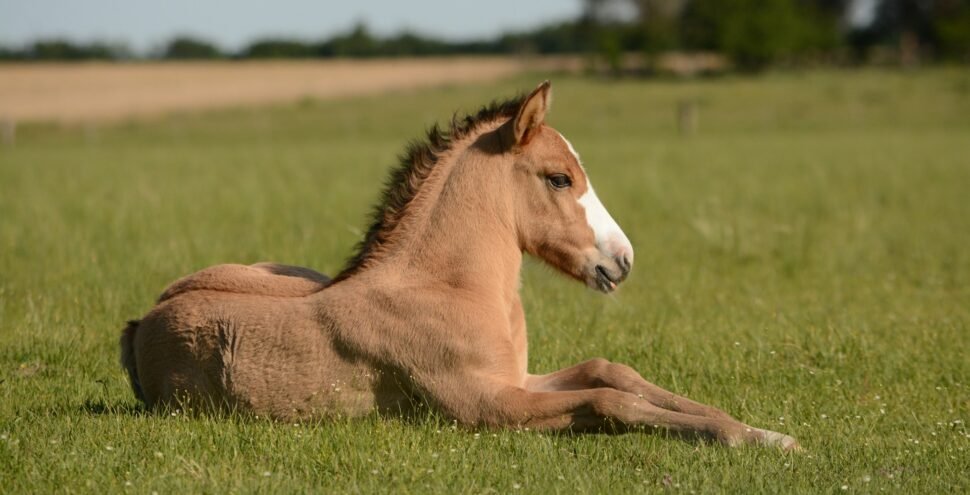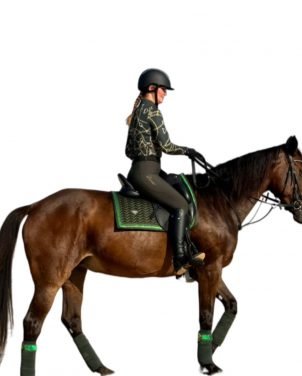Understanding horse behaviour is key to building a strong relationship with your equine friend. Horses communicate through body language and behaviour, and learning to interpret these signals can help you become a more attentive and compassionate rider. Whether it’s their ears, eyes, or tail, every part of a horse’s body can tell you something important about their mood and well-being.
Many horse owners and riders often wonder what their horse is thinking or feeling. By paying close attention to their behaviour, you can get a clearer picture. Recognising signs of stress, happiness, or discomfort allows you to respond appropriately, creating a more harmonious bond between you and your horse.
In this guide, we will explore how to read your horse’s body language, recognise common behaviours, understand stress and anxiety in horses, and discover tips for building a strong bond. By learning these skills, you’ll not only improve your riding experience but also ensure your horse remains happy and healthy. Understanding your horse is the first step towards a rewarding and lasting partnership with these magnificent animals.
Reading Your Horse’s Body Language
Horses communicate a lot through their body language. Learning to read these signals can help you understand what your horse is trying to tell you. Here are some key body parts to watch:
1. Ears:
– Forward: When a horse’s ears are pricked forward, it usually means they are alert and attentive.
– Laid Back: If the ears are pinned back against their head, they might be angry or feel threatened.
– Swivelling: Constantly moving ears often indicate curiosity or trying to listen to different sounds.
2. Eyes:
– Soft Eyes: A horse with relaxed, soft eyes is usually calm and content.
– Wide Eyes: If the eyes are wide open, showing more white, the horse might be scared or stressed.
– Blinking: Frequent blinking can signify that the horse is thinking or processing new information.
3. Tail:
– Relaxed: A loose, gently swaying tail means the horse is relaxed.
– Swishing: A tail that swishes a lot may indicate annoyance.
– Tucked: A tail clamped down tightly against the body can be a sign of fear or discomfort.
By paying attention to these body signals, you can gauge your horse’s mood and respond in ways that make them feel understood and safe.
Recognising Common Horse Behaviours
Understanding common horse behaviours helps you know your horse better. Here are some behaviours and what they typically mean:
1. Nudging You:
– Sometimes, horses nudge you with their noses. This is often a sign of looking for attention or affection. They might be asking for a pet or some treats.
2. Pawing the Ground:
– Horses paw the ground for various reasons. It could be because they are impatient, bored, or trying to relieve stress. Pay attention to the context to understand better.
3. Rolling:
– After a good ride or bath, horses often roll on the ground. This is usually a sign of contentment and is a natural behaviour to help them scratch those hard-to-reach places.
4. Snorting and Blowing:
– These sounds can indicate many things. A quick snort usually means the horse is clearing its lungs and is feeling alert while blowing softly signals relaxation and comfort.
5. Flehmen Response:
– When a horse curls back its upper lip and raises its head, it’s called the Flehmen response. This behaviour helps them better detect scents in their environment, often seen when they encounter something new or interesting.
Recognising these common behaviours allows you to better understand your horse’s needs and emotions. This insight can improve your relationship and create a more harmonious riding experience.
Understanding Stress and Anxiety in Horses
Horses, like people, can experience stress and anxiety. Recognising the signs of stress in your horse can help you address their needs and improve their well-being.
1. Signs of Stress:
– Pacing or Stall Walking: Horses may walk back and forth in their stall if they feel anxious.
– Sweating: Unexplained sweating, especially in cool weather, can be a sign of stress.
– Tail Swishing: Constant tail swishing might indicate irritation or nervousness.
– Lack of Appetite: A stressed horse might refuse to eat or drink.
2. Causes of Stress:
– Changes in Environment: Moving to a new stable or changes in routine can cause anxiety.
– Loud Noises: Horses are sensitive to loud or sudden noises which can startle them.
– Separation: Horses are herd animals and may get stressed if separated from their companions.
– Improper Handling: Rough or inconsistent handling can make a horse feel insecure or fearful.
3. Managing Stress:
– Consistent Routine: Keeping a regular routine helps horses feel secure.
– Companionship: Ensure your horse has interaction with other horses to reduce loneliness.
– Safe Environment: Create a calm and quiet environment to minimise stress.
– Gentle Handling: Use gentle and consistent handling methods to build trust and confidence.
Understanding and addressing stress in your horse can lead to a happier and healthier companion, ensuring a positive riding experience for both of you.
Tips for Building a Strong Bond with Your Horse
Building a strong bond with your horse is essential for a rewarding riding experience. Here are some tips to help you connect with your horse:
1. Spend Quality Time Together:
– Grooming: Spending time grooming your horse can strengthen your bond. It also gives you a chance to check for any health issues.
– Hand Walking: Walking your horse by hand is a great way to build trust and provide gentle exercise.
– Talking: Regularly talking to your horse in a calm and soothing voice can help them feel more comfortable with you.
2. Positive Reinforcement:
– Treats and Praise: Use treats and verbal praise to reward good behaviour. This encourages your horse and helps them associate you with positive experiences.
– Patience: Be patient and consistent in your training. Rushing can lead to frustration for both you and your horse.
3. Understand Their Language:
– Learn the Cues: Pay attention to your horse’s body language and behaviour. Understanding their signals helps you respond appropriately.
– Reciprocity: Respond to your horse’s efforts to communicate. If they nudge you, offer a gentle pat or kind word.
4. Join-Up Technique:
– This natural horsemanship technique involves using body language to communicate with your horse in a way that mimics herd behaviour, helping to build trust and leadership in a gentle, non-threatening manner.
Building a strong bond takes time and patience, but the rewards of a close, trusting relationship with your horse are well worth the effort.
Conclusion
Understanding horse behaviour is fundamental to cultivating a positive and meaningful relationship with your equine companion. By learning to read their body language and recognising common behaviours, you can become more attuned to their needs. Managing stress and anxiety in horses helps create a safe and comforting environment, making your riding sessions more enjoyable. Building a strong bond with your horse through quality time, positive reinforcement, and mutual understanding lays the foundation for a lasting friendship.
Horses are intuitive creatures that respond well to care and kindness. As you continue your journey in understanding and connecting with your horse, you’ll find that these efforts enhance both your riding experience and your horse’s quality of life.
Ready to deepen your connection with your horse? Explore our range of equestrian clothing that reflects the lifestyle of horse riding at Diamont Equestrian and embark on your journey with confidence and style.





